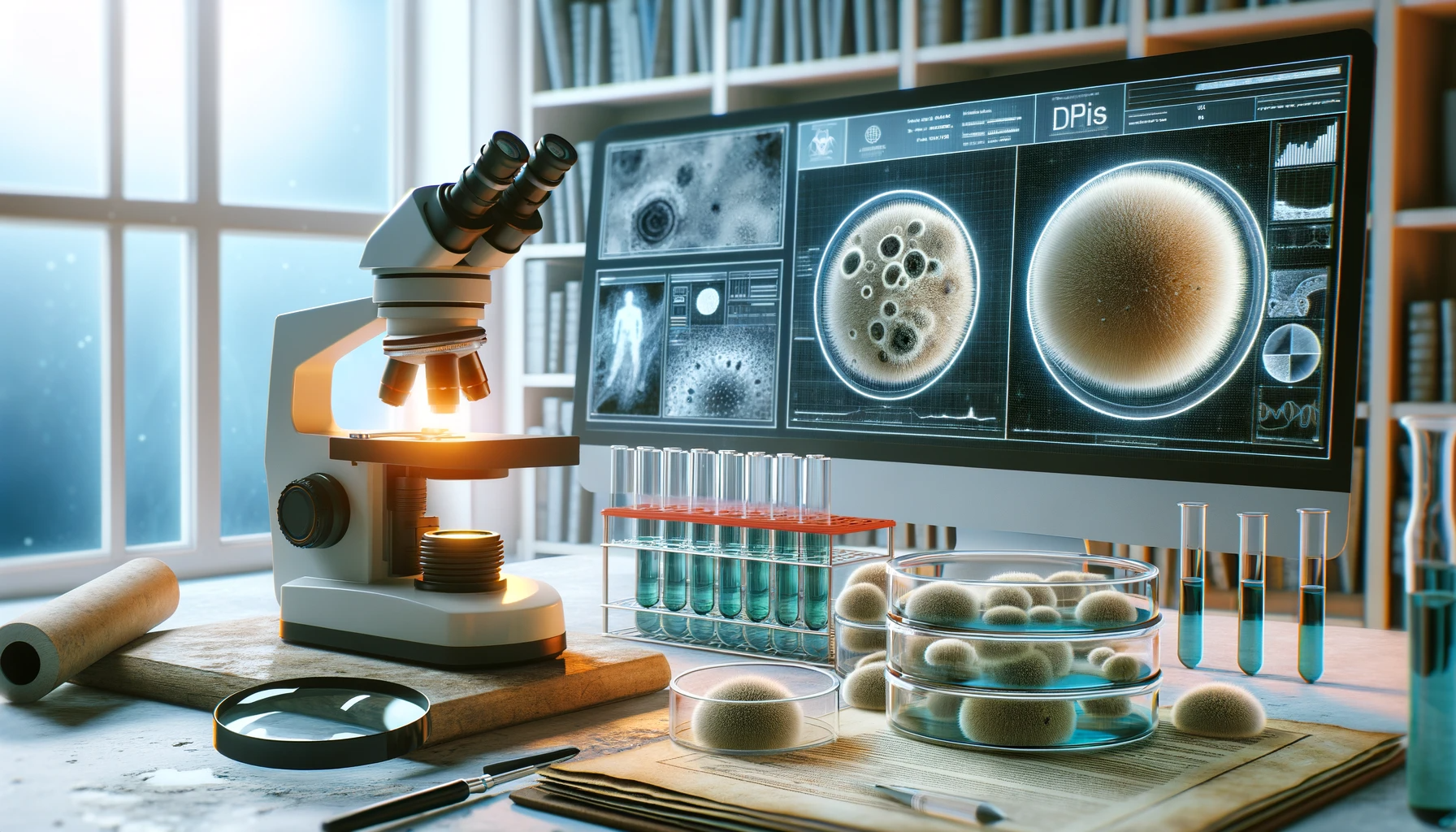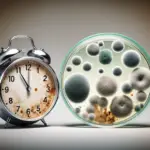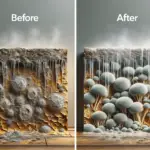Can Mold Cause Cancer
Results of various research have revealed that long-term mold exposure can cause chronic illnesses, including cancer. Notably, one strain has been found to significantly increase the risk for oncological diseases. Unfortunately, mold toxins suppress the immune system in a way that allows for the development of cancer. This connection is often overlooked in medicine as a contributing risk factor because few are asking these questions!
Nevertheless, various health issues have been linked to mold exposure. Mold grows in moist environments and its spores are spread through the air which makes it possible for them to enter homes and businesses. Most people inhale some every day without any adverse effects.
Mold can be hazardous to your health when present in high amounts or for long durations, exacerbating allergies and asthma, resulting in upper respiratory symptoms, and provoking mold poisoning. Since everyone has varying sensitivities to it, individuals with certain pre-existing conditions may suffer even more significant complications from exposure.
With this article, you will have access to all the information that you need concerning prevention methods as well as gain deeper insight into this topic.
What is a Toxic Mold?
Mold is a type of fungus that can spread and thrive in damp or humid environments. Toxic mold is a term used to describe molds that can produce mycotoxins, which are toxic substances that can cause severe health problems if inhaled. Mold can cause an array of different health problems, ranging from skin irritations and allergic reactions to more severe issues such as persistent coughing, headaches, flu-like symptoms, and even cancer.
Fungi that proliferate in filaments and generate spores are what we refer to as mold. Certain molds may produce toxins, also known as mycotoxins, which can be inhaled or absorbed through the skin or gastrointestinal tract. Stachybotrys chartarum, otherwise referred to as toxic black mold, has gained notoriety in this area; however it’s important to know that mold does not have to be black for it to be hazardous – any color could signify its presence.
The term ‘mold toxicity’ describes the multiple illnesses and symptoms associated with mold toxins exposure or water-harmed structures. Even more complicated, other organisms besides just mold can be behind this problem – fungi, actinomycetes, mycobacteria and bacteria all have toxins that are classified as mycotoxins.
Not only can mold spoil your food but the mycotoxins it generates such as aflatoxins are disastrously harmful. If consumed, they absorb into one’s digestive tract and cause extensive harm to their well-being.
What are the Risks of black mold exposure?
Mold can cause a range of illnesses and allergic reactions, depending on the person’s sensitivity to it. Some may experience nothing more than a slightly stuffy nose or skin irritation; however, others may suffer from wheezing, difficulty breathing, headaches, nausea, and even cancer.
The most serious health risk associated with black mold exposure is the development of certain forms of cancer. Research has shown that people exposed to high levels of black mold have an increased risk of developing liver, kidney, and gastrointestinal cancers.
Another major risk of black mold exposure is the damage it can do to your respiratory system. The spores produced by black mold have been known to cause chronic upper respiratory symptoms, coughing, chest tightness, breathing difficulties, and asthma attacks in those who are sensitive or allergic to them.
How dangerous is black mold to health?
Black mold is a toxic substance and can be extremely dangerous to your health if left untreated. Its spores are very small, easily inhaled into the lungs, and even when they don’t immediately cause damage can still linger in the air for months or years. Long-term exposure to black mold can lead to a variety of serious illnesses, such as cancer, respiratory diseases, neurological disorders, and other chronic conditions.
Diagnosis
To diagnose a mold allergy, medical professionals utilize methods such as assessing an individual’s symptoms and examining their medical/family histories. Furthermore, they may also carry out skin prick tests to detect potential allergens or blood tests which can measure the immune system’s response to certain molds and pinpoint any allergies present.
To detect fungal infection in someone with weakened immunity, doctors often take blood samples for analysis. In some situations, additional testing may be required to gain accurate results.
Treatment
For those suffering from a mold allergy, several treatment options can be employed to reduce symptoms. These include: avoiding exposure to the allergen when possible, showering after entering an indoor environment to remove potential allergens from skin and hair, managing humidity levels inside your home with air conditioning or dehumidifying appliances; replacing carpets and other fabrics which may have high moisture content such as those found in basements; taking antihistamines for symptom management; using eye drops for relief of itching/burning eyes.
Can mold cause permanent health problems?
Yes, long-term exposure to mold can cause permanent health problems. Not only does mold cause numerous respiratory issues, but it can also be linked to serious neurological disorders including memory loss and dementia. Studies have also shown that black mold can lead to cancer in some people. It is important to take the appropriate steps to reduce mold exposure as soon as possible to avoid any potential long-term health effects.
Mold Toxicity Symptoms
The symptoms of mold toxicity depend on the type, duration, and severity of the exposure. Symptoms may include:
Some of the possible signs associated with mold exposure include, but are not limited to:
- Asthma and allergies ;
- Headaches;
- Depression;
- Neurological issues;
- Joint pain;
- Autoimmune disease;
- Abdominal pain, nausea, bloating;
- Reduced memory and cognitive decline;
- Fatigue and weakness;
- Vertigo, dizziness.
Additionally, if the infestation is severe enough, it can lead to respiratory failure and consequently death. It is important to seek medical attention as soon as possible if you believe that you may have been exposed to mold to reduce any potential health risks.
Who’s at risk of toxic mold exposure?
Everyone is at risk if exposed to mold, however, certain individuals may be more vulnerable to its harmful effects. According to the CDC, these include individuals with weakened immune systems due to existing illnesses or conditions such as cancer, chronic fatigue syndrome and diabetes; infants, young children and the elderly; individuals with allergies or asthma; smokers; people living in damp environments.
What kind of cancer can mold cause?
Mold can cause certain types of cancer in some cases. Exposure to particular varieties of mold, such as Stachybotrys chartarum, can lead to the development of pulmonary hemorrhage, which is a form of lung cancer.
Aflatoxin, a toxic substance created by certain types of mold, is capable of making you ill and even causing liver cancer if ingested. This usually occurs through the consumption of contaminated food that has been grown in tropical or subtropical climates which provide an ideal atmosphere for mold to thrive.
Aflatoxins are mycotoxins often found in mildewy foods during the harvesting, storage and packaging process. All types of foods, from peanuts and grains to corn, nuts and seeds, coffee, chocolate – the list goes on – can be contaminated by mold. This is why it’s important to take precautions when purchasing these items at your local market or grocery store.
Moreover, persistent exposure to air-borne mycotoxins (created by fungi) can also increase the probability of other types of cancer. Since certain molds make it difficult for our bodies to eliminate toxins from them, long-term contact can be detrimental and cause harm to cells in our bodies.
Is black mold linked to cancer?
No, there is not enough evidence to say that black mold is directly linked to cancer. While there is no scientific evidence to suggest that black mold spores causes lung cancer, it has been suggested that long-term exposure to certain types of mycotoxins such as Satratoxin may increase one’s risk for developing some forms of lung disease. It is important to be aware of this potential danger and take necessary steps for prevention if you suspect your home may contain high levels of harmful molds.
Can mold exposure cause liver cancer?
Aspergillus mold is a dangerous substance that has been linked to hepatocellular carcinoma, otherwise known as liver cancer. This fungus produces aflatoxins which can make you ill if ingested rather than inhaled. Aflatoxin is the primary toxin influencing an increase in this type of cancer and is generally found in damp environments with high humidity levels. It is important to practice proper food safety and preventative measures when storing and consuming foods grown in tropical or subtropical climates to avoid exposure to aflatoxins.
Can mold exposure cause lung cancer?
Recent scientific research has found a correlation between exposure to mold and an increased risk of developing lung cancer. Although there is no definitive answer yet, the evidence suggests that long-term exposure to mold spores can exacerbate existing allergies and induce upper respiratory symptoms—which has been linked to lung cancer.
Moreover, it appears that these exposures may increase the risk of developing certain types of cancers, especially in individuals who are already predisposed to the disease. However, more extensive studies are needed before any definitive conclusions can be drawn.
How can I get rid of mold?
If you suspect your home may have a mold issue, it is important to act quickly to prevent any further health risks. The most effective way to remove mold from your living space is through comprehensive cleaning and disinfecting techniques.
To adequately remove mold, one must:
- Eliminate any wet materials that may be harboring spores. This includes carpets and fabrics.
- Hard surfaces should then be meticulously cleaned using a solution of bleach and water or hot soapy water (1 cup of bleach per gallon). To further eradicate visible mold growth from hard surfaces, consider utilizing commercial cleansing products specifically designed for the removal of mold.
- Wear protective clothing such as rubber boots, gloves and goggles they are essential to prevent contact with potentially dangerous substances while cleaning.
In addition, it is important to identify the source of moisture that is causing mold growth and take steps to fix any leaking pipes or windowsills. If you are unable to remove the mold yourself, it may be best to contact an experienced professional who can safely remove the mold and provide guidance on preventing future problems.
How can I prevent mold growth?
The best way to prevent mold growth is to eliminate any sources of moisture and humidity in your home. This can be achieved by fixing any plumbing leaks, improving ventilation, and using dehumidifiers or air conditioners to regulate indoor humidity levels. Be sure to clean out any stagnant water in gutters, particularly after heavy rains. Additionally, it is important to regularly inspect your home for any signs of mold growth, such as discoloration on walls, ceilings or floors.
Conclusion
Exposure to indoor mold and its spores can cause serious health problems, especially for those who have a weakened immune system and are predisposed to lung diseases or allergies. Long-term exposure is potentially linked to an increased risk of developing certain types of cancers, as well as exacerbating existing mold allergies. Therefore, it is important to take steps to reduce and manage indoor mold to protect our health from the potential adverse effects of mold exposure.
To help fend off adverse health effects from mold exposure, it is wise to hire a professional to inspect and clean your living space if you suspect the presence of mold. Furthermore, eliminate any sources of moisture in your home, use dehumidifiers to regulate indoor humidity levels for optimal air quality and be mindful about inspecting your residence for potential signs of mold growth. Taking these prudent steps will provide an additional layer of protection against hazardous conditions caused by inhaling or touching contaminated surfaces.



